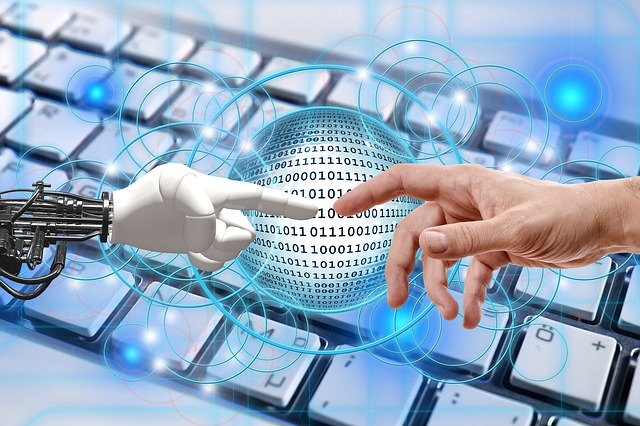CIO Insights:
Time to Commit Higher to Self Service Customer Experiences
Although digital transformation in retail can take several directions, there can only be one starting point, the customer. Transformations in customer experiences that focus on self-service are inevitable. Consequently, companies are building up their IT infrastructure, systems integration, expertise and data capabilities in order to enhance customer experiences.
As companies push further ahead with their digital strategies, it is increasingly evident that CIOs play an integral role to deliver enhanced customer experiences. Technology based disruption has become pervasive and CIOs, with their vast knowledge, are in the best position to influence the adoption of best practices in IT based on emerging trends.
Need for Self Service Customer Experience
 Gone are the days when people called up airline offices, in order to make bookings or wait in queues to purchase movie tickets. These reduced human interactions have not been put in place to reduce expenditure exclusively; but driven by the fact that customers prefer to do things themselves.
Gone are the days when people called up airline offices, in order to make bookings or wait in queues to purchase movie tickets. These reduced human interactions have not been put in place to reduce expenditure exclusively; but driven by the fact that customers prefer to do things themselves.
Customers today prefer to gather information on their own as well as solve their problems themselves to the extent possible and at their pace.
There will always be instances where customers need to speak to a real person for a request or an issue. The secret is in knowing which types of issues require a live interaction and which do not and then quickly routing customers to the appropriate channel for further action.
A research carried out by Nuance has shown that 67% of respondents preferred self-service over speaking to a customer service executive. The study also reveals that 59% of customers feel frustrated if their issues are not resolved through the self-service channels and they are compelled to go through live interactions. It is clear here that self-service is where retail experience is headed. Organizations need to utilize this kind of information and preempt appropriate channels to customers. This will ensure a happy and satisfied customer driving up profits.
Numerous advanced technologies can help companies improve the quality of customer experiences through Artificial Intelligence(AI), managed cloud services, and analytics. Enterprise application support goes a long way in assisting organizations to offer self-service customer experiences par excellence.
Best Practices for Implementing Self Service Customer Experiences


When self-service is done right, it allows the customers to find information and resolutions quickly. This also reduces the number of calls or emails the support team receives. Some of the best practices adopted in achieving better self-service customer experiences are:
-
Personalized Interactions
Consumers share a lot of information through various interactions with the organization. This information, when analyzed, can help in providing the consumers with tailored and customized services based on their preferences.
-
Guided Conversations
Customers love choice. When it comes to interaction with chatbots, it is important to give customers the option to quickly select guided options based on common issues or questions. The option to continue in the native language is an equally important option in such interactions.
-
Omnichannel Experience
Customers want companies to be available whenever and wherever they want for support and purchase. Omnichannel by means of cloud computing is a strategy to reach out to customers, whether it is in stores, their mobile devices, on the web and so on. Connecting phone support to digital channels, bots and self service provides a single messaging thread, which the customer can pick up at any point of time in order to exercise a choice or resolve any issue without having to start from scratch. Impact of cloud computing on retail business is most evident in the omnichannel experiences.
-
Escalation Channels
When launching any self service solutions, several brands make the mistake of failing to offer escalation options. It is important to allow customers to be able to move from the digital channel to speaking with a customer service representative when their issues require a little more service than what a chatbot can offer. An escalation via text chat, voice or video call can help to resolve the issue in a seamless manner.
-
Continuous Reinvention and Adaptation
Products, policies and information are constantly changing. While self-service is the go to option today it is not a set and forget about it endeavor. The most efficient way to manage this is to keep a track of questions that currently do not have an answer to which help for new content to be created.
-
Analysis of Self Service Data
Questions which come in from the customer through self-service channels are a great source of information for any organization. An analysis of all such data gathered can help to spot trends in customer preferences and further opportunities of cross sell and retention.
-
Technologies That Are Enabling Customer Self Service
As digital technology evolves, customers have grown to expect new standards of excellence and performance. Here are some of the most talked about technologies which deliver the best of customer experiences and self-service.
-
Virtual Reality(VR)
VR engages customers by providing them with experiences of a product or a service.
-
Augmented Reality(AR)
AR based self service allows customers to use their smartphone to access a company’s knowledge base, FAQs, manuals and training material thereby helping their buying decisions with any human interaction
-
Artificial Intelligence(AI)
AI based analytic systems and customer facing systems improve customer service, enable personalization and cater to individual customer requests.
-
Chatbots
Chatbots backed by advanced technologies sport an algorithmic learning feature which allows them to learn from previous conversations and tweak responses.
-
Internet of Things(IoT)
IoT allows for cross platform synergy and engagement which has catalyzed growth of new products. Brands can now use this technology to promote direct ties between real world activities and digital communication to deploy promotional campaigns across platforms. The impact of IoT on enterprises is thereby gaining traction.
-
Phygital Checkout
Removing barriers to transactions from the shopping experience is a great draw in the current COVID-19 scenario. Phygital is one of the biggest digital transformation features that offers cross channel fulfillment. The customer is able to purchase from the comfort of his home or elsewhere and subsequently pick up the item at their convenience without having to wait for delivery.
Conclusion
The emergence of cutting edge technologies will further add to the concept of self-service customer experience. The CIOs role isn't just about technology enablement but also interacting with customers to understand their needs and pain areas. As CIOs better understand the customer, harness their organization’s data and foster strong alignment with the business plan of the organization, they can drive an effective customer centric strategy for the business.

